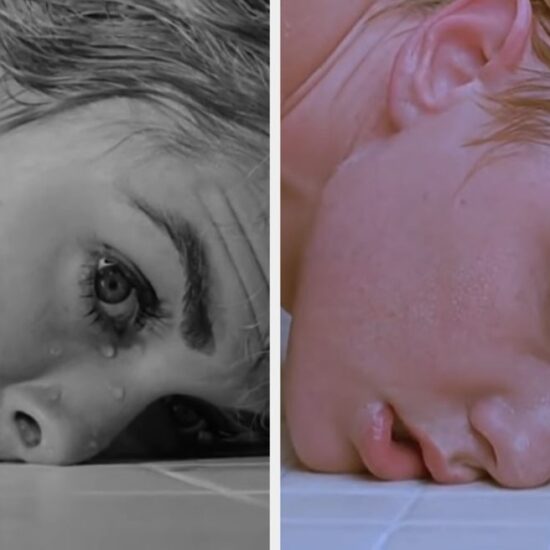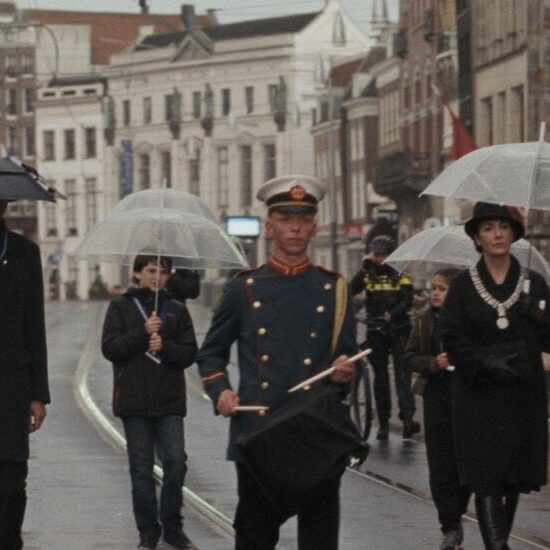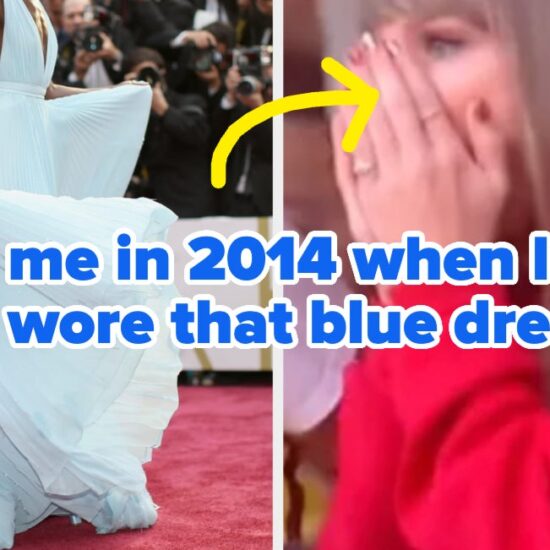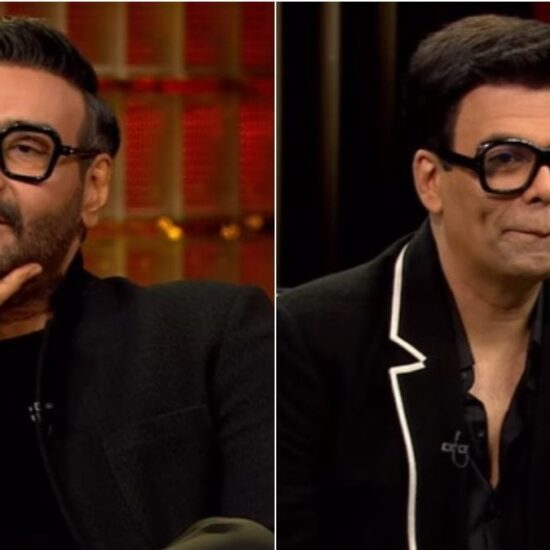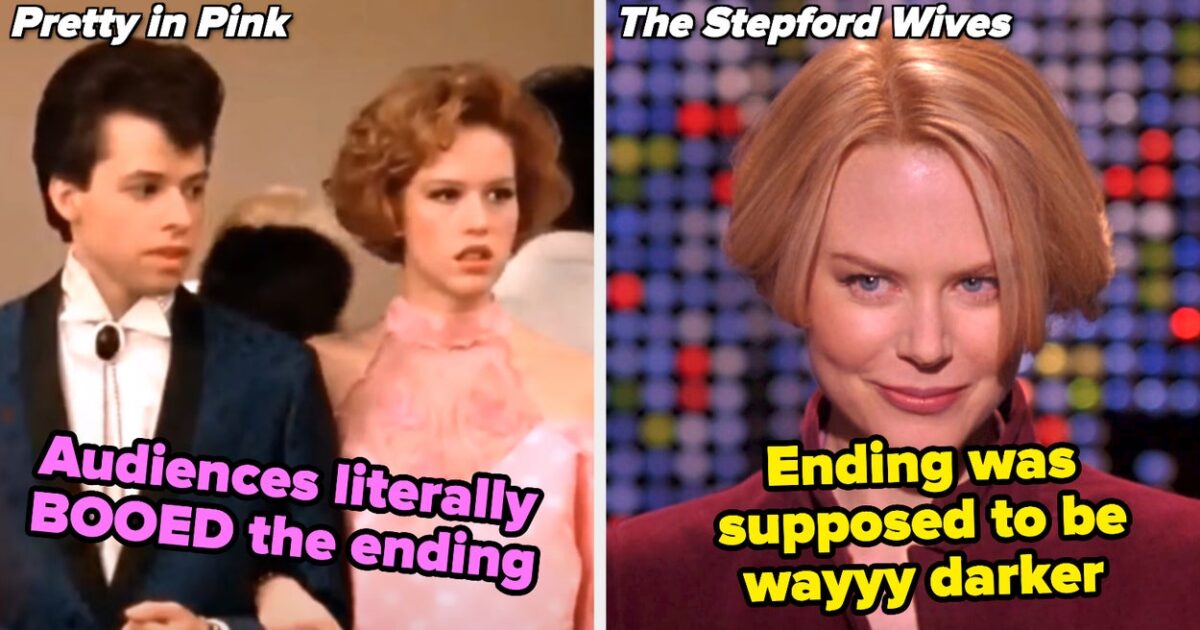
1.
At the end of Pretty in Pink, Andie memorably chooses popular guy Blane over her best friend Duckie — but originally, she was supposed to end up at the prom with Duckie, and the two would dance together.* However, test screenings apparently saw audiences literally booing at this choice. “Up to that point, the screening had been like a rock concert. And we got to the ending, and they started to boo,” director Howard Deutch said. “That young audience, they did not want Molly to end up with Jon Cryer. The girls were like, ‘Forget the politics. We want her to get the cute boy.'”
They only had one day to reshoot the ending, which saw Blane showing up alone instead of with a date as he had previously. Blane stands up to his friend Steff and tells Andie he loves her before leaving…at which point Duckie encourages Andie to go after him, which she does. The two kiss in the parking lot. According to Deutch, test audiences loved the new ending: “They were satisfied, fulfilled, and delighted. And I agreed.”
2.
Scott Pilgrim vs. the World also had a different ending that saw the lead end up with a different character. In the original ending, Ramona walked away from Scott and Scott left with Knives to play DDR.
This was changed to the ending we all know, not only because of test audience reactions, but because of the release of the graphic novel the movie was based on, which had Scott end up with Ramona.
3.
If you’ve ever seen the stage show of The Little Shop of Horrors, you’ll remember an extremely bleak ending: Basically, Audrey II kills Audrey, Seymour feeds her body to the plant, then Seymour tries to destroy Audrey II…which leads to Audrey II eating him. Test audiences were NOT a fan. “The more we came in close to that love story between Rick and Ellen, the more the audience hated that we killed them,” said director Frank Oz, who had originally advocated for the dark ending.
“People took it seriously, and they were extremely upset that we killed the people they loved.” The reaction was so bad — 13% recommendation from a crowd who had cheered throughout the whole movie then gone silent for the last 10 minutes — that they spent six weeks reshooting the ending, which had also featured Audrey II multiplying and basically taking over the world. The original final shot showed one of the plants climbing up the Statue of Liberty as the army fought them, then the plant lunging through the screen.
The new ending, which featured Seymour saving Audrey before she’s devoured by the plant, and the two destroying Audrey II then moving to the suburbs, was much better received by test audiences. However, there still was a slight dark tone to the ending, which shows Audrey II popping back up in a bud in the garden.
4.
Rambo: First Blood was also supposed to have a darker ending. Director Ted Kotcheff saw Rambo’s journey as a suicide mission, and intended to kill off Rambo at the end. The book the film was based on also ended with Rambo dead.
However, when Sylvester Stallone signed on to star, he requested to help Kotcheff rewrite the script. Though they still shot the ending with Rambo’s death, Stallone came up to Kotcheff and said, “You know, Ted, we put this character through so much. The police abuse him. He’s pursued endlessly. Dogs are sent after him. He jumps off cliffs. He runs through freezing water. He’s shot in the arm and he has to sew it up himself. All this, and now we’re gonna kill him?”
Kotcheff ultimately saw Stallone had a point. “To then have him kill himself means the enemy would have won, that town would have killed him. By this time, the audience had gotten the message. Did they need me to excessively pile it on?” They reshot the ending right away and had Rambo agree to leave with the colonel and see that the sheriff survived. This led to some tension with the producers, which ultimately led to a test screening with the original ending. The audience all agreed, “‘This is the best action film I’ve ever seen. But the ending is horrible!'” So, the second ending was used.
5.
Legally Blonde‘s original ending saw Emmett kissing Elle right after winning the trial, with a flash-forward a year into the future showing Elle and Vivian (now blonde) handing out pamphlets for their “Blonde Legal Defense Fund.” However, test audiences thought the ending wasn’t exciting enough and wanted Elle’s success to be more clear. “The kiss made it seem like it was a rom-com,” cowriter Karen McCullah said. Her cowriter, Kirsten “Kiwi” Smith, added, “They knew that this was not a movie about a girl getting a guy.”
The two (with the film’s director and producer) literally sat down in the lobby of the test screening theater and wrote the graduation speech for Elle to end the movie instead. You can actually tell when the new ending comes in (when Elle rejects Warner; this scene had been in the prior version, but had to be reshot for continuity after the old ending that accompanied it was scrapped). Reese’s hair looks redder (she was in a wig), and she appears to have freckles. They also shot her part in London, and all the reactions in Burbank, so the lighting was a bit off. “But the new ending was way more satisfying,” McCullah acknowledged, making these issues worth it.
6.
Multiple endings were considered for Halloween Ends, but director David Gordon Green really wanted to go with a more “modest” and “intimate” ending to “return to the simple dramatic roots.” But, Green revealed, “Then there were times when I thought it just didn’t play big enough and I wanted some scope to it. We wanted something more grand, and [that became] the procession sequence. So the actual ending of the movie we came up with this summer, like two months ago, after we screened it a few times.” The procession sequence he’s referring to is parading Michael Myers’ dead body around town in front of everyone, then putting him through an industrial shredder.
7.
The beginning of that reboot trilogy, Halloween (2018), also apparently had a different ending. Both Michael and Laurie appeared to die in the original ending (with Michael stabbing Laurie, then Karen shooting Michael with a crossbow), which reportedly changed after test screenings, but there’s far less record of this change. Instead, the movie ended with Laurie burning her house down with Michael inside, only to reveal he’d escaped.
8.
Sweet Home Alabama had a sort of strange original ending where lightning struck as Melanie and Jake kissed during the lightning storm at the end of the film, and the screen went white. Jake then carried a limp Melanie into a wedding reception, saying, “Melanie Carmichael is dead…Long live Felony Melanie.” Melanie then kissed him and got to her feet and they danced. Director Andy Tennant called the ending “funny on paper,” but said test audiences got really angry at the fake-out. “When we showed it to a test audience, the whole room was just like, ‘What the fuck?!’ The audience loved the movie up until that shot.”
The ending was reshot to take out the lightning strike. Instead, in the ending we all know and love, the two went up to the bar to an impromptu wedding reception and danced to Sweet Home Alabama.
9.
Producers were forced to add a new scene at the end of Thor: The Dark World to show that Loki was alive after test audiences “didn’t accept” Loki’s death. “Loki’s death on Svartalfheim was written as a death, and I would say Chris and I played that scene for real. That was meant to be that he redeemed himself, he helped save his brother, he helped save Jane Foster, but that he, in the process, sacrificed himself,” Tom Hiddleston, who plays Loki, revealed.
“It was part of the original pitch and in test screenings, the audience didn’t accept it. They said, you know, ‘He’s obviously coming back. That didn’t really happen.’ And there was a very strange and almost unanimous resistance to it. They decided that wasn’t the end.” So, an ending was added to show Loki impersonating his father on the throne, which Hiddleston called “a great twist.”
10.
Tree was also originally supposed to die permanently at the end of Happy Death Day. In the film, Tree finally breaks the loop and survives until the 19th. But in the original ending, Tree is poisoned by Gregory’s wife and dies. But this ending didn’t fare well with test audiences: “They were pissed,” the actor who plays Tree, Jessice Rothe, revealed.
“They were like, ‘You made us care about this person. You can’t do this. We went on this journey. We love her.'” This ending was scrapped, and instead, Tree wakes up in Carter’s bed. He originally tricks her into thinking the loop has continued, then reveals he was joking, and they kiss.
11.
National Lampoon’s Vacation memorably ends with the Griswolds finally making it to Walley World, only to find that it’s closed. Clark then forces a security guard to take them on all the rides using a BB gun. However, this was not the original ending — they were originally meant to see the park was closed, then go to park owner Roy Walley’s mansion to tell him to entertain them since his park couldn’t. Director Harold Ramis revealed test audiences were not a fan of this ending: “The audience was hysterical watching the film in our test market screenings all the way up to that moment, and then they went strangely quiet and did not laugh again for the rest of the picture.”
“It occurred to me that they’d now invested about, oh, 70 minutes, 75 minutes, on the way to Walley World. And they really expected to get to Walley World. And here we were denying them the payoff to the whole trip,” Ramis continued. In the original ending, the group presumably went to Walley World afterward, but it’s not shown. They then get on a plane to go home, where it’s announced that the plane isn’t going back to Chicago, causing Clark to lose it.
But all of that was scrapped, and Ramis had the film’s screenwriter, John Hughes, write the ending we all know. They tested it with audiences, who loved it. Though if you look closely, you’ll notice that the kids look older and bigger in the new scenes — by Anthony Michael Hall’s own admission, he’d begun to go through puberty.
12.
The 2004 remake of The Stepford Wives reportedly changed extensively during test screenings. “The movie has been in Hollywood’s version of intensive care, undergoing a protracted series of test screenings interspersed with editing-room surgeries,” reported the New York Times. One of these changes included adding an epilogue.
While the original ending of the film is unknown (some sources suggest it followed the ending of the book the film was based on), director Frank Oz admitted that test audiences didn’t find it satisfying. In the new ending, Joanna doesn’t ever actually become a Stepford wife, and the wives are freed. An epilogue reveals the husbands are under house arrest for what they’ve done to their wives and are in subservient positions similar to those they put their wives in.
13.
Test audiences did not like the original ending of My Best Friend’s Wedding, which saw Julianne meet a new guy at the very end and dance with him at the wedding. In fact, “They wanted her dead,” revealed director P.J. Hogan. “They just couldn’t understand her motives.” They decided to change the ending, but they were in a predicament: The studio wanted a happy ending for Julia Roberts’ character, so they couldn’t just have her end up sad and alone.
They decided to expand George’s character (played by Rupert Everett) with phone calls to make Julianne more sympathetic throughout the film. “Whenever she was being particularly devious, I’d have her phone Rupert’s character and he would call her out on it,” Hogan revealed. They then reshot the ending to have George show up to dance with her (platonically; George was gay). “That one scene somehow gave the audience permission to forgive Julianne. Those last five minutes really made the whole movie work.”
14.
Final Destination ends with Carter getting killed, revealing they didn’t escape Death after all. But the original ending was actually happier and featured a different character’s death.
In the original cut of the film, Clear and Alex actually got together, and Clear became pregnant. But when Alex saved Clear from the car explosion, he died to save her.
The film then flashed forward to Clear giving birth to their son and visiting the memorial of the victims with Carter, resolving to live her life to the fullest since it could end at any time. But test audiences hated the fact that Alex died, so the film was changed to keep him alive, though the ending was much bleaker. “Saving” Alex meant little, as those who have seen Final Destination 2 know he was killed by a brick between movies.
15.
And finally, Prisoners didn’t change their original ending as a result of a test audience, but actually kept the ending because of the test audience. The ambiguous ending you see in the film — where Keller blows the whistle from the hole in the ground he’s stuck in and Loki looks like he *might* hear him — was the one in the script. But they had shot a few additional scenes with Loki actually finding Keller, just in case. They went to test audiences with the ending they wanted — without the more definitive part — to see if it was received well. Audiences ended up liking it, and the extra shots were scrapped.
What do you think — were the original endings better, or do you prefer the final version? Let us know in the comments!
- timewarnerent.comhttps://timewarnerent.com/author/gleberman1236/
- timewarnerent.comhttps://timewarnerent.com/author/gleberman1236/
- timewarnerent.comhttps://timewarnerent.com/author/gleberman1236/
- timewarnerent.comhttps://timewarnerent.com/author/gleberman1236/










